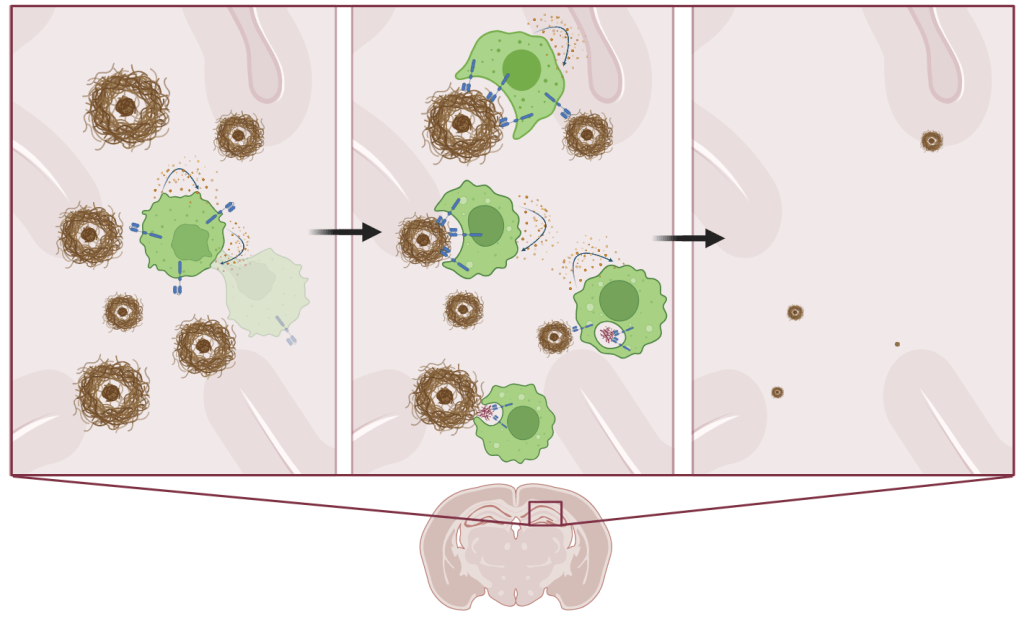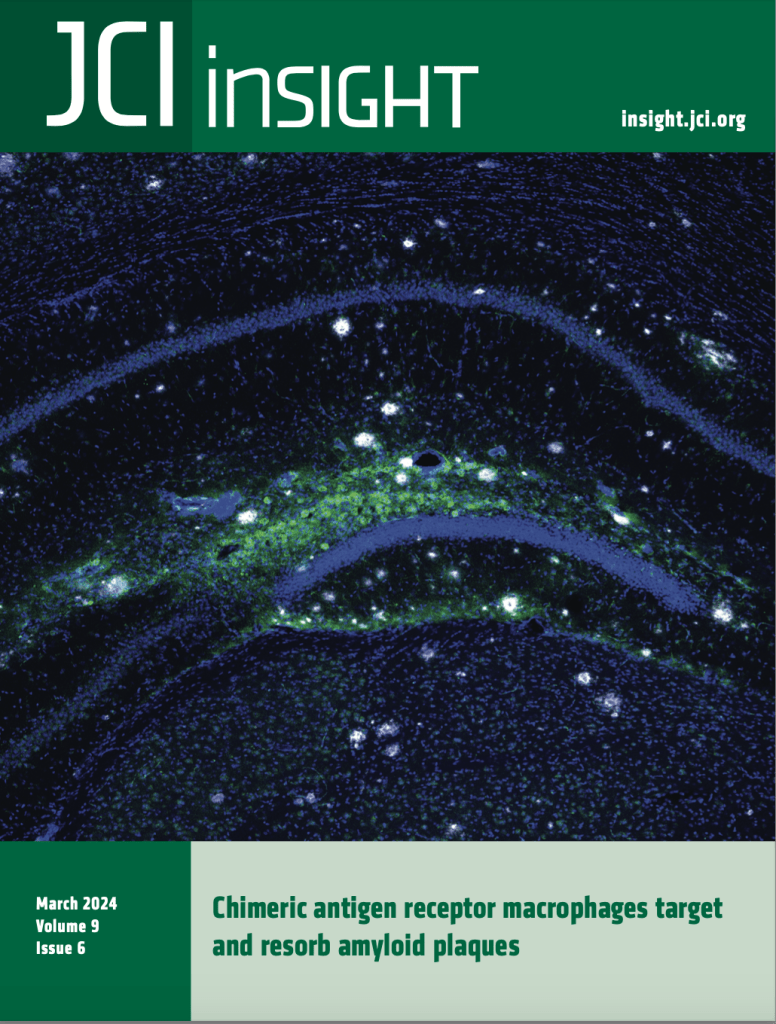Macrophages infiltrate every tissue of the body, including tumors, in health and disease. Depending on the context, they can phagocytose material, present antigen, promote healing, promote immune-mediated rejection, or promote tolerance. Harnessing them to perform one or more of these roles in a more predictable way is a challenge, which may be achievable using a CAR.
In a proof of concept study, we targeted a CAR to amyloid plaques, which build up in Alzheimer’s disease (AD), introduced this CAR into macrophages, then introduced these CAR-Ms into the brains of AD mice. We further enhanced these CAR-M’s persistence and survival by engineering them to secrete a survival cytokine, M-CSF. We found these CAR-M’s significantly reduced plaque load in vivo in AD mice; this is the first study to show that CAR-M’s may be used beyond cancer.

Numerous questions remain, such as how do we get these cells to penetrate the blood brain barrier? How do we get them to adapt to, and survive in the brain niche? What other cytokines, if engineered into the CAR-M, would promote disease resolution? What CAR backbones are most appropriate? How do CAR-M’s affect the local microenvironment? We look forward to hearing others’ solutions to these problems, and collaborating to better solve these challenges!
